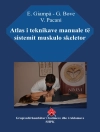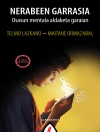Compulsive Sexual Behavior Disorder: Understanding, Assessment, and Treatment tackles a diagnosis that remains the subject of intensive debate. Although compulsive sexual behavior disorder (CSBD) is among the new diagnoses included in the World Health Organization’s 11th Revision of its International Classification of Diseases (ICD-11), which goes into effect in 2022, it does not appear in DSM-5. The editors, two of the preeminent researchers on sexual disorders, explain this schism by way of background and then, along with a roster of highly qualified contributors, undertake the work of describing CSBD, instructing clinicians on how to address it effectively in their practices and exploring areas for further research. The book is replete with clinical vignettes that illustrate the concepts addressed in the chapters, allowing the reader an intimate look at diagnostic, treatment, and cultural issues as well as comorbidities, co-occurring substance use, and more.
Coverage is clinically useful and thorough: Diagnostic aspects of CSBD are explored in two chapters: The first conceptualizes out-of-control sexual behavior and compares sexual addiction and CSBD by reviewing proposed criteria for both conditions, with an emphasis on common co-occurring psychiatric disorders, and the second details the comprehensive evaluation of CSBD and outlines how to conduct clinical interviews with CSBD patients. In a chapter both fascinating and rich in clinical insight, the authors explore the role of the internet in hypersexuality, ascertaining when online sexual activities become online sexual problems and proposing possible treatments. Because high rates of CSBD are found among individuals with substance use disorders, particularly in regard to alcohol, opioid, and stimulant use disorders, the book examines sexual addiction and substance abuse in depth, including preferred therapeutic modalities and interventions. Clinical treatments for CSBD — both psychopharmacological and biopsychosocial — are presented, with the former emphasizing the importance of enhancing sexual self-control, reducing sexual drive, and treating comorbid psychiatric disorders, and the latter taking an integrative approach, focusing on underlying concerns with intimacy formation, describing treatment modalities, and describing the phases of treatment. Because legal issues and hypersexuality overlap regularly, the forensic aspects of CBSD are addressed, with the goal of assisting clinicians in competently navigating the legal sphere — from developing a legally defensible opinion to identifying mitigating factors to acting as an expert witness.
Although the diagnosis of CSBD may be debatable by taxonomists, the fact remains that patients presenting with these problems are suffering. Compulsive Sexual Behavior Disorder: Understanding, Assessment, and Treatment brings clinicians up to speed with the ICD-11 diagnosis and empowers them to understand and alleviate the psychological pain of their patients and clients.
Jadual kandungan
Chapter 1. Compulsive Sexual Behavior Disorder: From Myths to Reality Chapter 2. Sexual Addiction vs. CSBDChapter 3. Compulsive Sexual Behavior and Substance Use Disorders Chapter 4. The Internet and CSBDChapter 5. Diagnostic Aspects of CSBD: DSM and Beyond Chapter 6. Clinical Evaluation of CSBDChapter 7. Pharmacotherapy for Patients With CSBDChapter 8. Psychotherapies in the Treatment of CSBDChapter 9. Compulsive Sexual Behavior Disorder in Women Chapter 10. Forensic Aspects of Hypersexuality Chapter 11. Hypersexuality and Sexual Compulsivity: Behavioral/Sexual Risks and Risks of Sexually Transmitted Diseases Chapter 12. Religious and Cultural Influences of CSBD
Mengenai Pengarang
Richard Balon, M.D., is a Professor in the Departments of Psychiatry and Behavioral Neurosciences and Anesthesiology at Wayne State University School of Medicine in Detroit, Michigan.
Peer Briken, M.D., is Professor and Director of the Institute for Sex Research, Sexual Medicine, and Forensic Psychiatry at the University Medical Centre Hamburg-Eppendorf in Hamburg, Germany.












